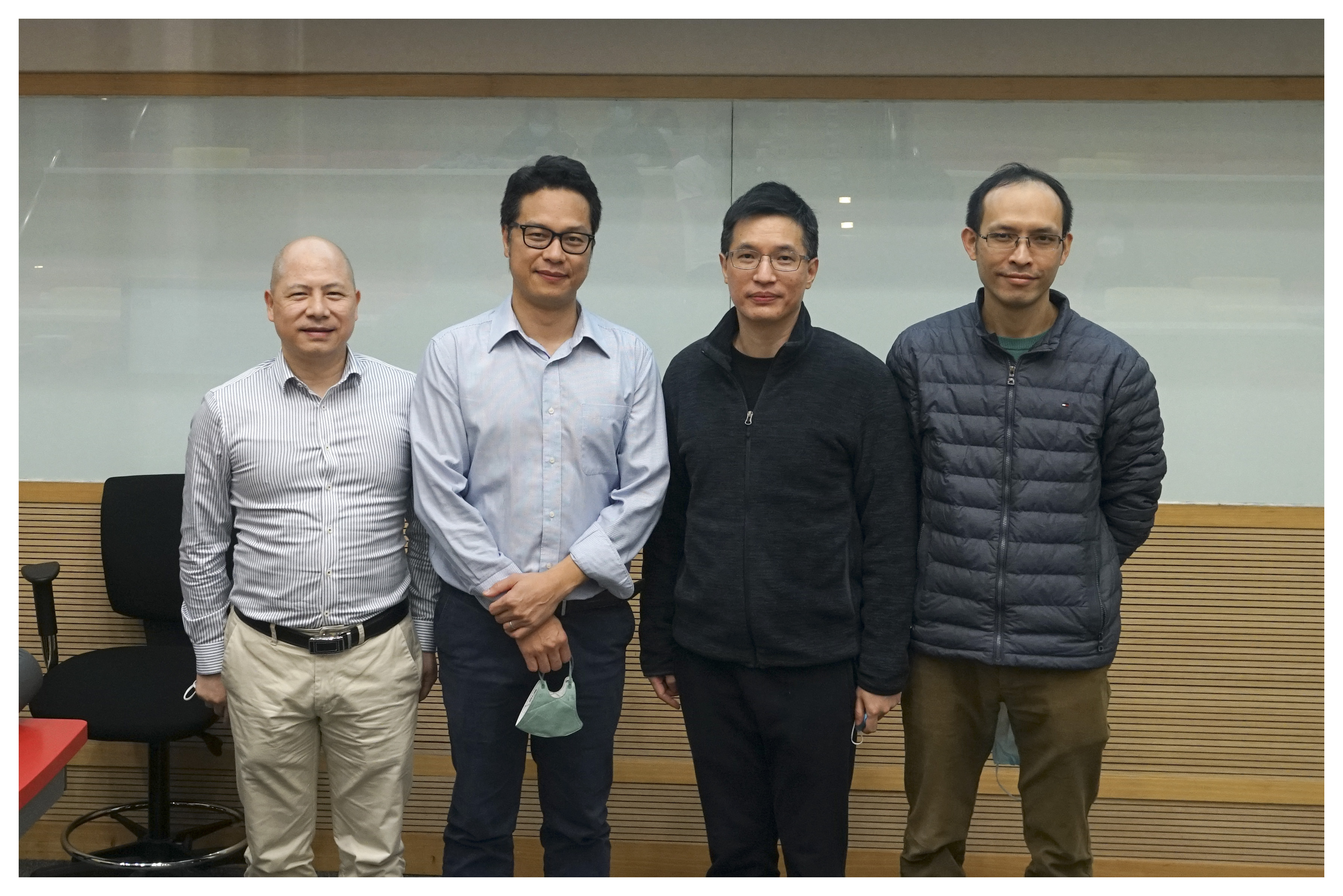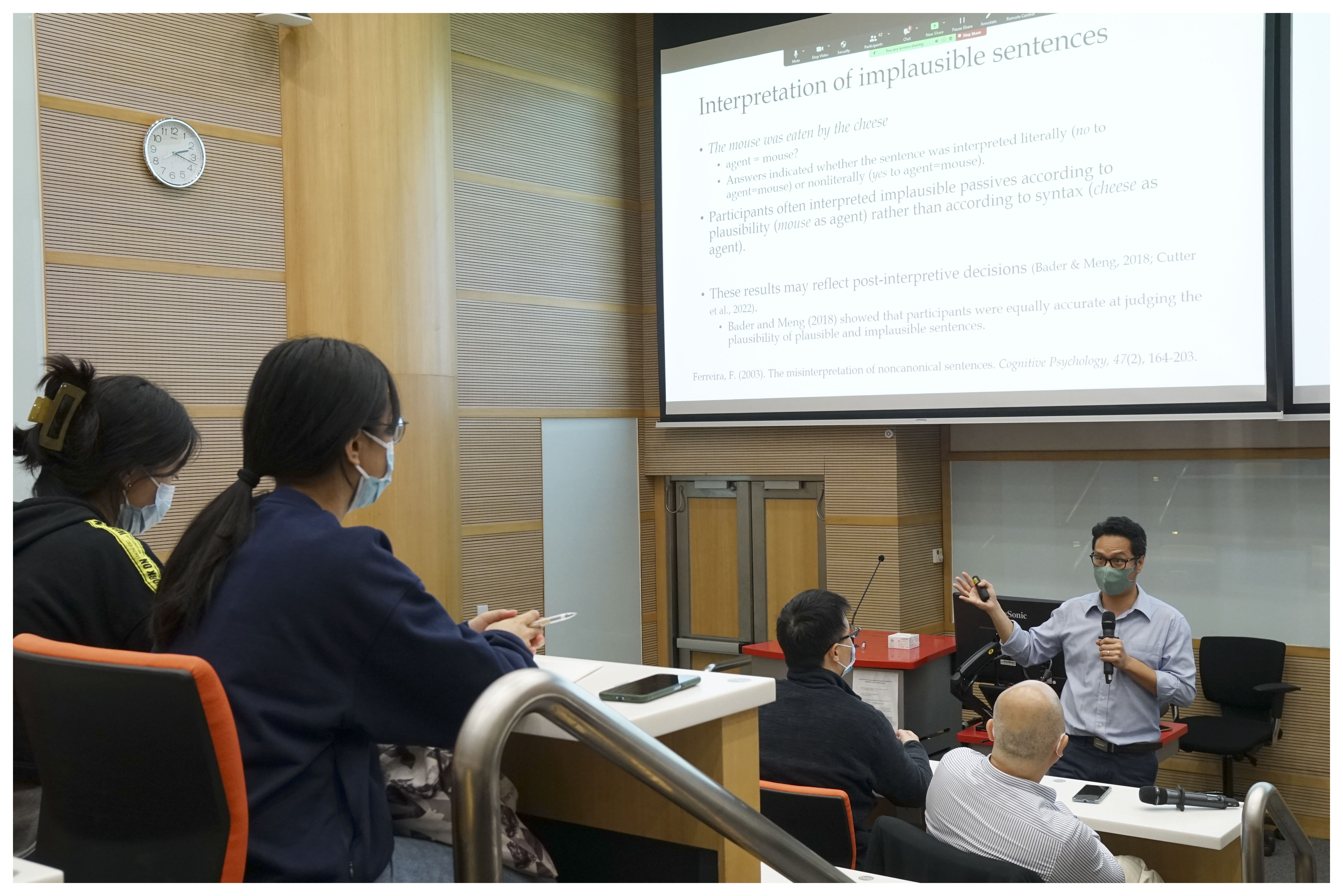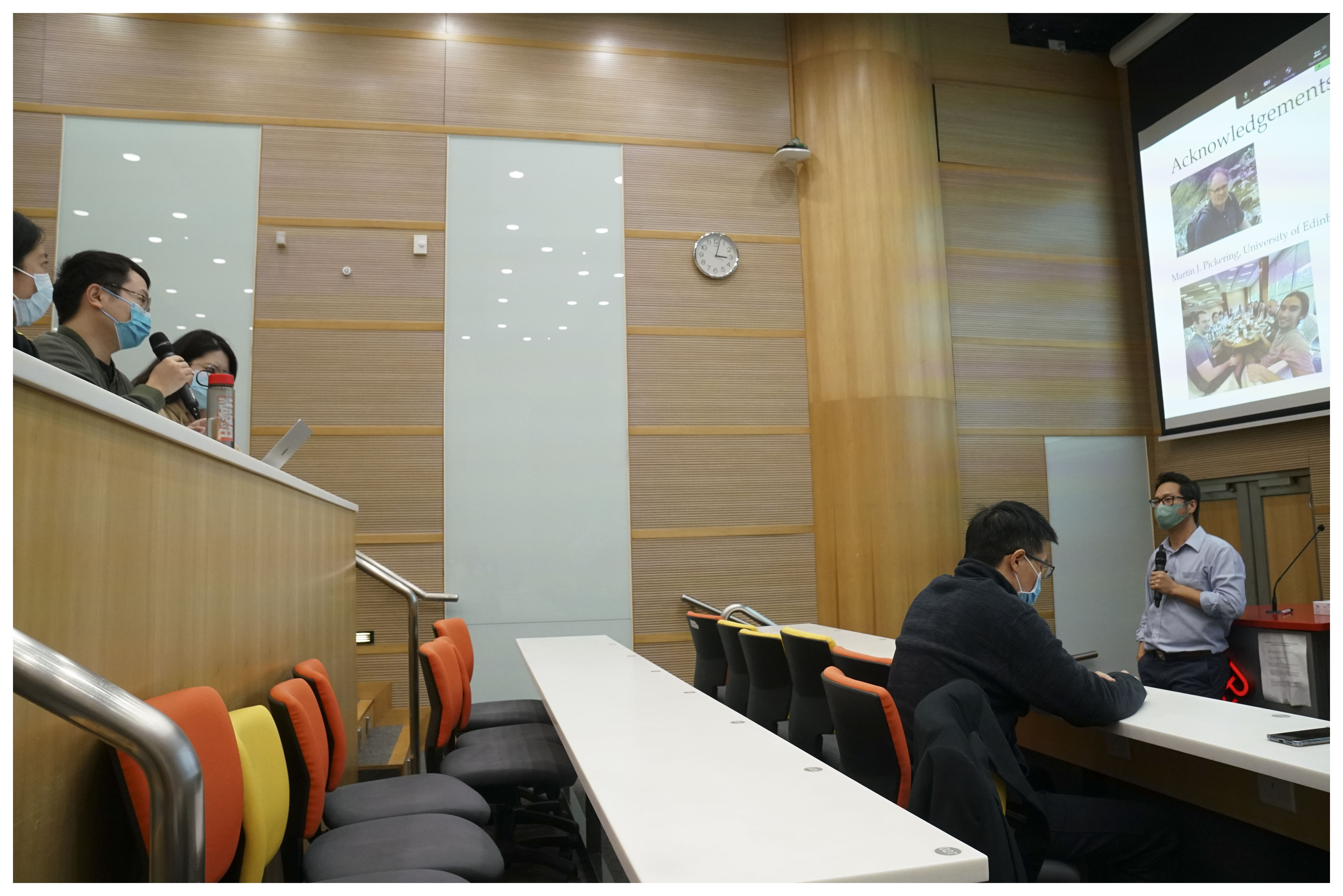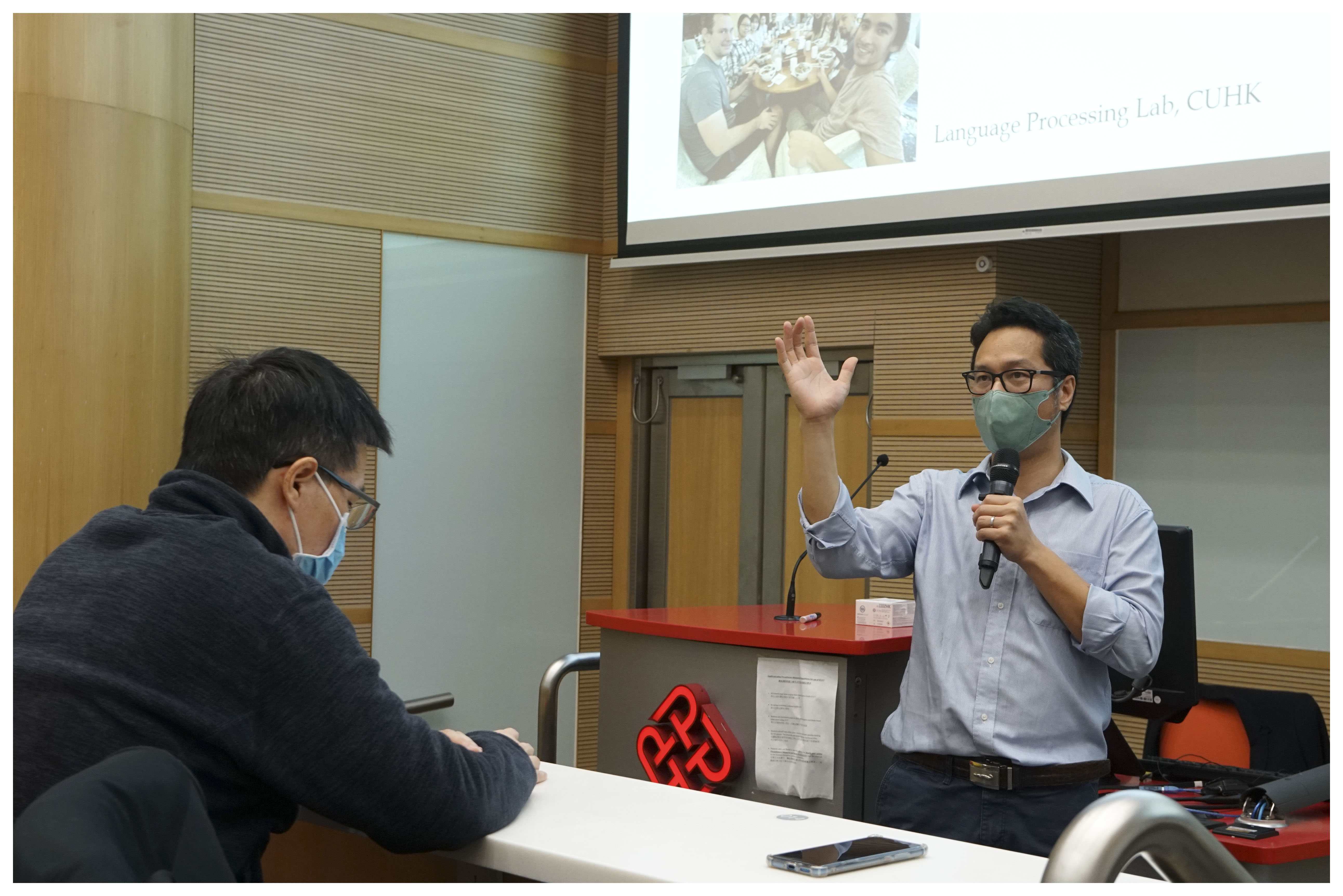Past Events
How do people understand implausible sentences?
2022.12.07 Prof. CAI Zhenguang
Associate Professor
Department of Linguistics and Modern Languages / Brain and Mind Institute
The Chinese University of Hong Kong
How do people understand implausible sentences?
People sometimes interpret implausible sentences nonliterally, for example treating The mother gave the candle the daughter as meaning the daughter receiving the candle. But how do they do so? In this talk, I contrast a nonliteral syntactic analysis account, according to which people compute a syntactic analysis appropriate for this nonliteral meaning, with a nonliteral semantic interpretation account, according to which they arrive at this meaning via purely semantic processing. The former but not the latter account postulates that people consider not only a literal-but-implausible double-object (DO) analysis in comprehending The mother gave the candle the daughter, but also a nonliteral-but-plausible prepositional-object (PO) analysis (i.e., including to before the daughter). I will present findings from structural priming experiments. Participants heard a plausible or implausible DO or PO prime sentence. Then they answered a comprehension question (where we measured whether a sentence is literally or nonliterally interpreted). Finally, they described a picture of a dative event (where we measured how picture description is influenced by the syntactic representation participants have computed for the plausible/implausible prime sentence). The results show that, in accord with the nonliteral syntactic analysis account, priming was reduced following implausible sentences than following plausible sentences and following nonliterally interpreted implausible sentences than following literally interpreted implausible sentences. The results suggest that comprehenders constructed a nonliteral syntactic analysis, which we argue was predicted early in the sentence. I also present experiments where I tested how people understand implausible sentences produced by non-native speakers. Participants had an increased tendency to nonliterally interpret non-native implausible sentences than native ones, but they had no increased tendency to syntactically revise non-native implausible sentences than native ones. It is proposed that people rely more on semantic cues and less on syntactic cues in comprehending non-native speech.
> PDF for review
> Playback of Prof. CAI Zhenguang's lecture









